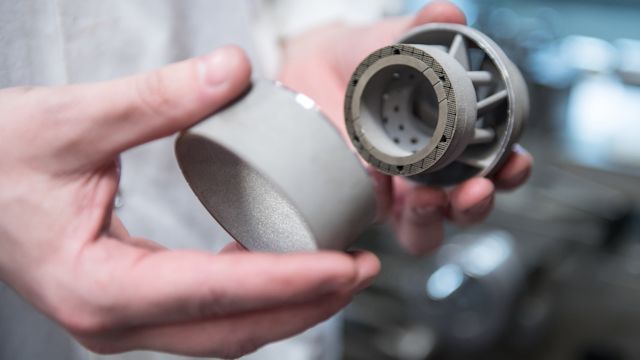

There is no question that additive manufacturing has developed into an independent production division, which makes it possible to realize completely new components and structures in small numbers but also increasingly in individualized mass production. Siemens is heavily investing since years into additive manufacturing (AM).

With the official opening of its 3D printing facility at Materials Solutions Ltd. (Siemens is a major shareholder) in the U.K, Siemens underlines this strategy. The investment of €30 million will double the number of 3D-printing machines to 50 and increase its post-processing capabilities. AM is taking out of the traditional research laboratory into an industrialized production factory. By employing industrial methods to scale up production, costs will be brought down by manufacturing high-end complex metal parts in serial production in an industrial environment. A digital end-to-end chain will be able to solve complex customer challenges by producing high-end serial parts for e.g. Siemens Power and Gas and customers in the aerospace, automotive, motorsport, and other industries.
The factory employs many of Siemens’ latest digital factory and AM technologies, including an end-to-end PLM chain, the CAD software NX, and MindSphere, theircloud-based, open IoT operating system. Virtual production begins long before the actual printing.
As an example, Siemens will use AM technology to manufacture combustion components for the SGT5-9000HL gas turbine, and they will be used for the first time by the Scottish energy company SSE plc at the combined cycle power plant Keadby 2 in Lincolnshire, U.K.
Industrial 3D printing will decisively influence future production, ARC Advisory group does, as most other experts agree. Despite all prophecies of doom, additive manufacturing will not completely replace traditional metal-cutting processes, but it will expand production by adding another technological alternative. Nevertheless, there are still some "hurdles"(cycle times, surface aftertreatment, powder in air/production, raw materials, vibration,…) to overcome before the "equal and equal" integration of industrial 3D printing into the shop floor works. The fact that industrial automation heavyweights such as Siemens, Mitsubishi Electric and GE are increasingly turning their attention to additive manufacturing gives the already booming industry further impetus and continues to boost innovation cycles.

